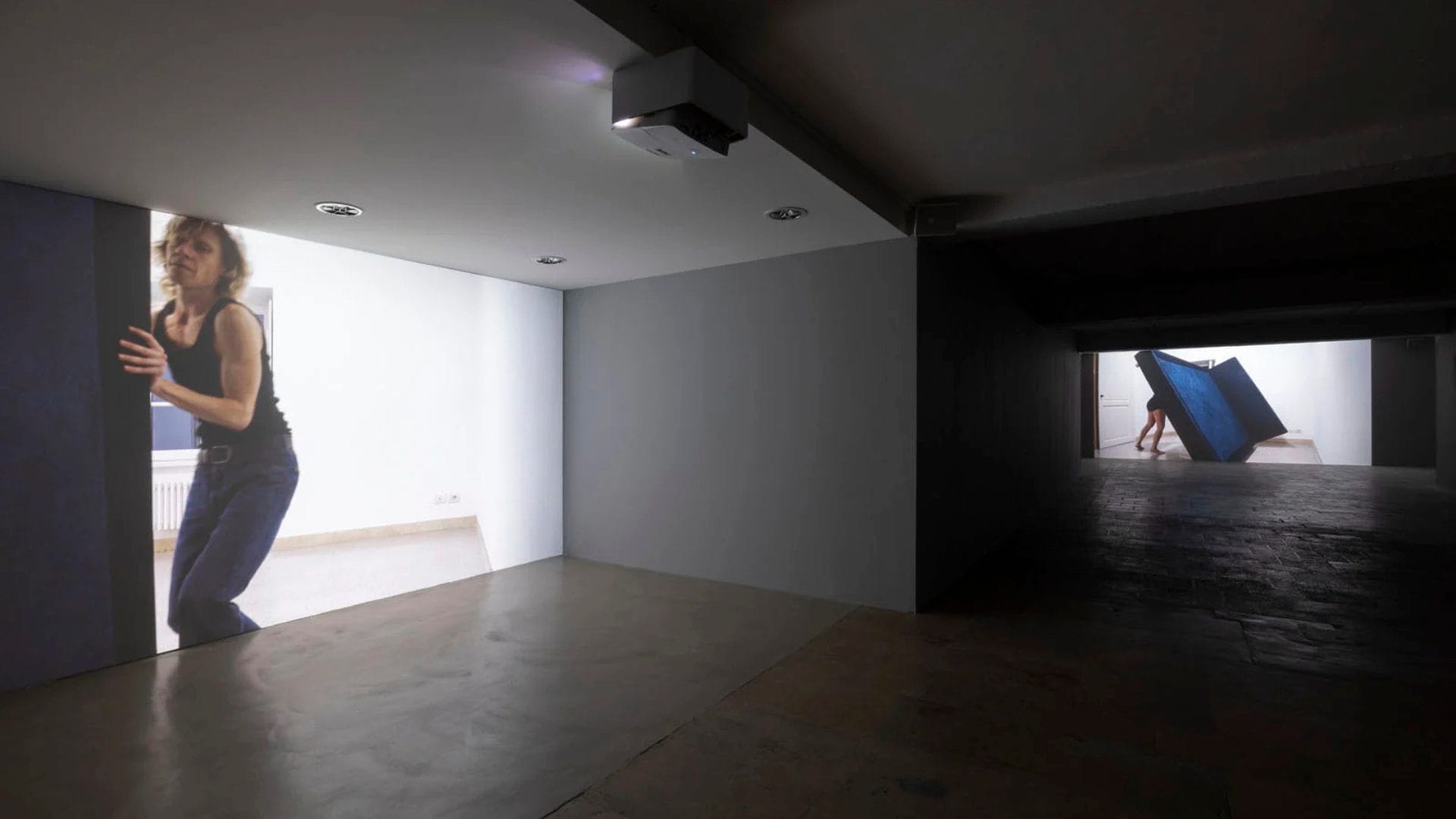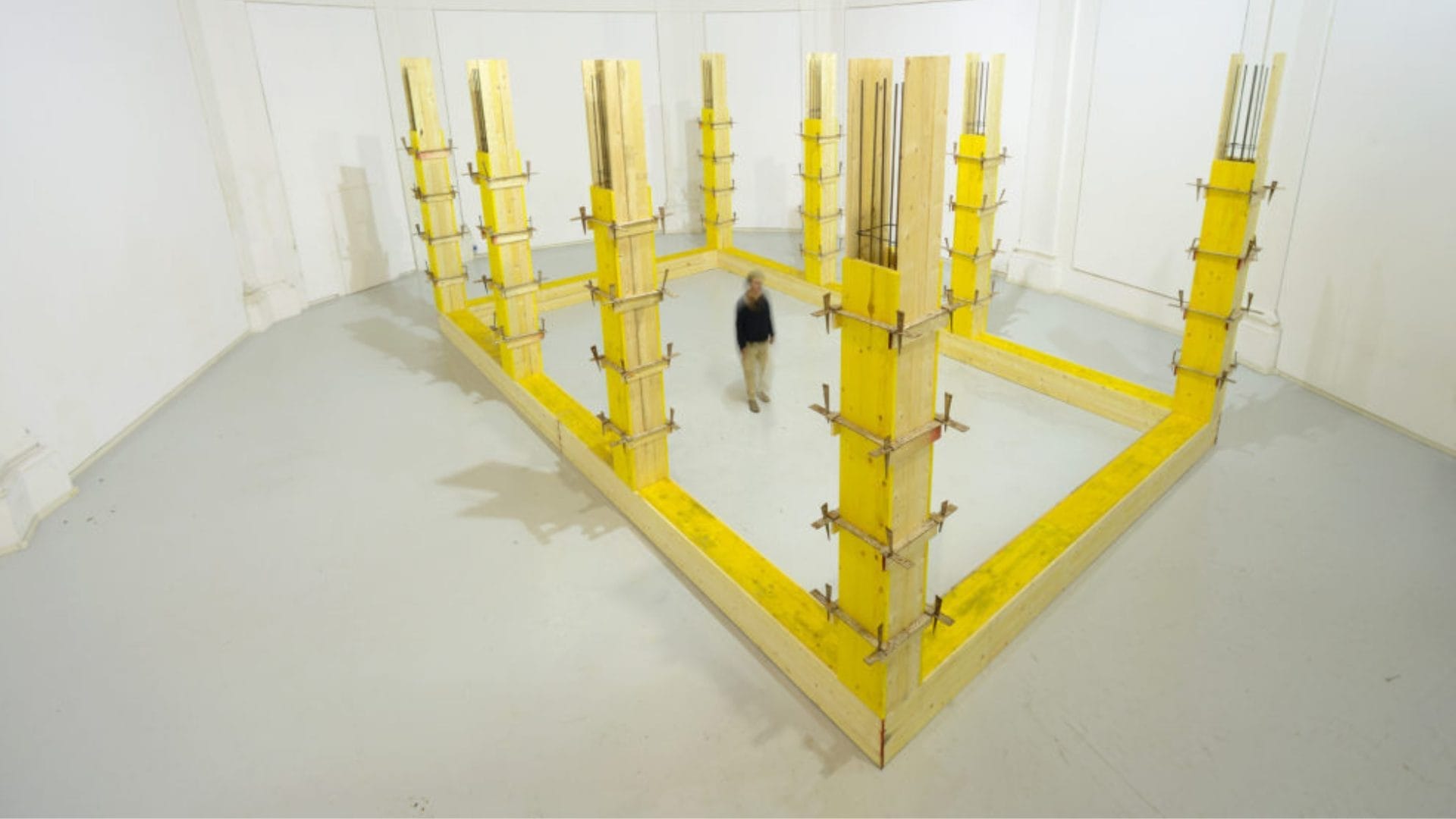
Between Precariousness and Structure: Fakewhale in Dialogue with Giovanni Termini
Giovanni Termini‘s art is a continuous dialogue with space, matter, and the tensions between balance and fragility. His work transforms the construction site into a space for aesthetic and conceptual reflection, where emptiness is never absence but possibility. In an art world increasingly driven by market logic that favors painting and immediate visual impact, his focus on sculpture and installation stands out for its depth and consistency. At Fakewhale, we had the opportunity to speak with Termini about his practice, influences, and thoughts on the current state of sculpture.
Fakewhale: Your work is deeply connected to the exhibition space, turning it into an active element of the artwork itself. Looking back at your experience, were there moments when a space truly “challenged” your work, forcing you to rethink your approach or intervention?
Giovanni Termini: For me, space has never been just a passive exhibition container but a living dimension with its own existential imprint, something I feel the need to engage with. It is not merely a physical location; it is an entity with which I establish a dialogue, one that influences my work as much as I seek to influence it.
Every encounter with a space is an opportunity for discovery, a confrontation that unfolds on multiple levels: objective, intuitive, sensory, and emotional. I am particularly interested in exploring the limits that a space imposes because it is within these constraints that new expressive solutions emerge.
That is why I have always preferred working in places with a strong identity, environments marked by time, history, and lived experience. These spaces offer me far more stimulating tensions and insights than neutral, sterile settings devoid of memory or character.
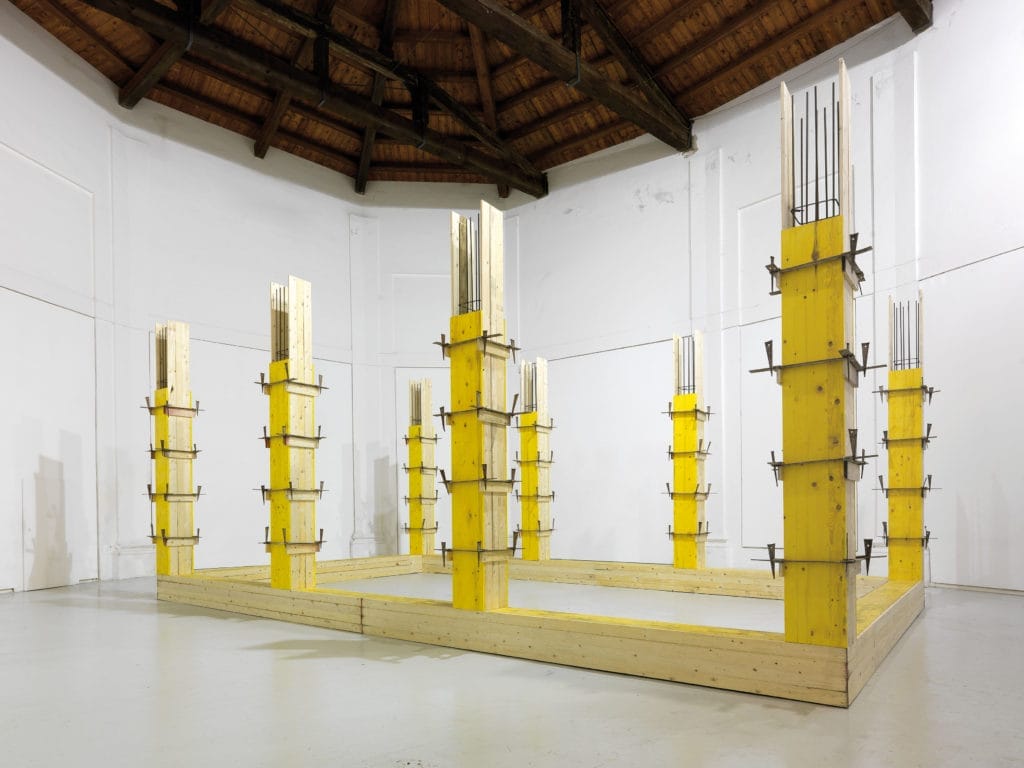
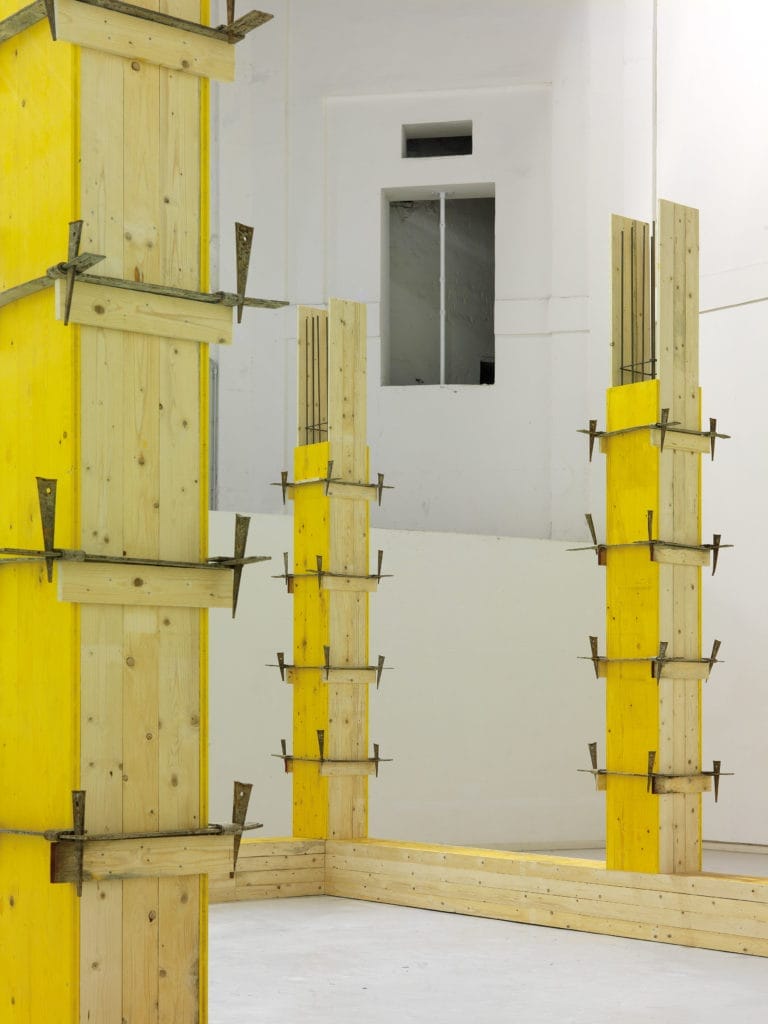
Your practice moves between industrial materials, construction structures, and assemblages that evoke a precarious equilibrium. To what extent does this exploration stem from a reflection on society, and how much is it a purely formal investigation into sculpture?
For many years, I worked as a laborer, and that experience allowed me to see materials and construction processes from a different perspective. I did not just perceive them as mechanical tasks tied to production but as moments infused with a hidden poetry, gestures that carried an intrinsic creativity.
Perhaps it was this need to find a deeper meaning in what I was doing that led me to look beyond the purely functional context of labor. Amidst machines, tools, and raw materials, I began to sense an expressive potential that extended far beyond their practical use.
Today, my work continues to draw from that world, from experiences that are deeply personal because I have lived them firsthand. These are the materials, gestures, and sensations I know best, and they remain the driving force behind my artistic research.
The concept of “waiting” is central to your work, both as a creative process and as an existential condition of the artwork itself. I am thinking of Celare l’attesa or the exhibition Pregressa, where the exhibition space becomes an open construction site. In an era of rapid art consumption, how possible is it to create works that invite the viewer to a more prolonged reflection?
It is difficult to give a definitive answer. When I started, I did not feel the same pressures we experience today. In a time where everything moves at a frantic pace, with accelerated consumerism, fast food, and endless scrolling on social media, even ideas and images risk burning out in an instant, consumed by the speed at which they are produced and replaced.
Often, we fall into the logic of “everything, immediately,” sacrificing the depth of a long-term journey for instant gratification. Yet, as human beings, we are always in a state of waiting, expecting something to happen, for things to change. This is precisely the dimension of waiting that interests me in my work. Every time I revisit an artwork, I want to be the first to feel transformed. Because for me, art should never be about providing reassurance but should exist in its becoming.

In recent years, the art world has shifted towards more immediate and decorative painting, often sidelining installation and sculpture, which require longer production and comprehension times. Do you see this transformation as a limitation or a challenge?
I do not set limits for myself, nor do I see things in terms of challenges. I simply present myself as I am and dedicate myself to what I feel I do best. I love the language of sculpture because its physical presence takes up a tangible space, creating a tension between emptiness and matter. Just think of Duchamp and the story behind the birth of Trebuchet.
As for painting, what is happening today is nothing new. Everything follows a cyclical pattern. We have already seen a similar phenomenon in the past. At the end of the 1970s, in reaction to the dominance of concept and materiality, it seemed as if the only possible response was a return to painting. But in the end, what truly matters are the works themselves, regardless of the medium, whether painting, sculpture, or something else, and, above all, their ability to generate poetry.
The contemporary Italian art scene does not have many artists pursuing a path similar to yours, with such a radical approach to installation and the relationship with space. Do you feel part of an Italian sculptural tradition, or rather an isolated figure in the national landscape?
Good question. I have never reflected too much on this aspect, but from the very beginning, I was fully aware that I was building something unusual. I could tell from the audience’s reactions, often disoriented, and from the difficulties that commercial galleries faced in positioning my work.
It has not been an easy journey, but over time I have earned a credibility that now allows me to move forward with greater freedom. Thanks to the trust of my collectors, curators, and the galleries I collaborate with, I have been able to give continuity to that dream, to that project which, echoing the words of Kurt Schwitters, aspires to be a total work of art, with no boundaries between art and life.
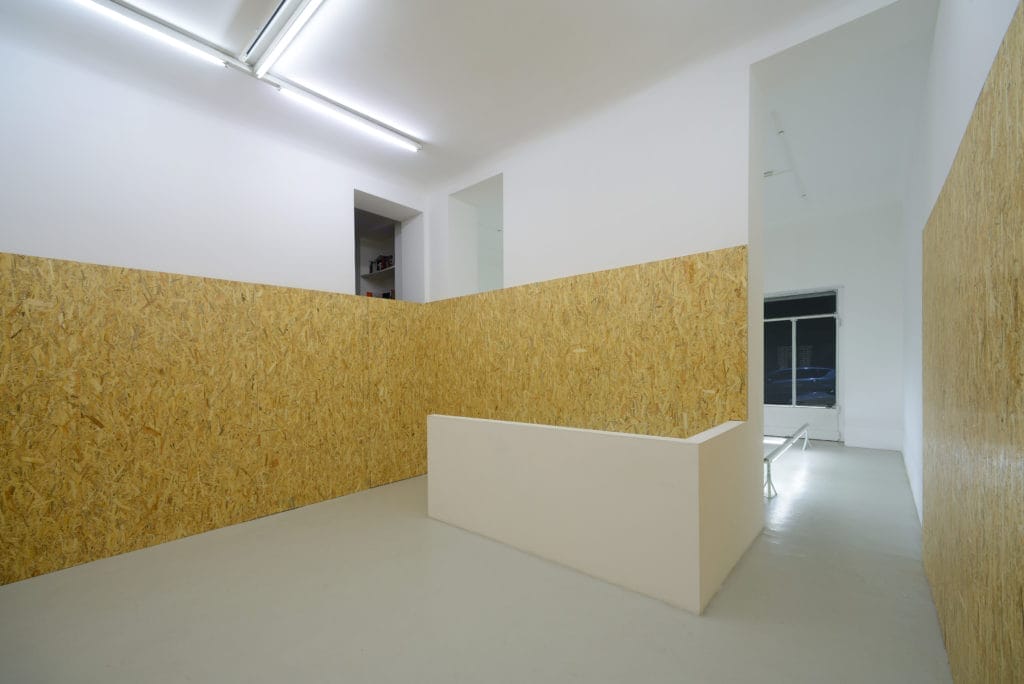
In your formative years, were there artists or movements that shaped your vision of sculpture? I am thinking, for example, of the connection with Arte Povera or international figures like Pedro Cabrita Reis and Oscar Tuazon. Tell us about your most important influences.
Without a doubt, my artistic roots go back to the 1960s, but even earlier to the great Italian sculptural tradition. I think of Arturo Martini, Marino Marini, and the assemblages of Ettore Colla. Among them, however, two artists had a particularly strong impact on me: Paolo Icaro and Eliseo Mattiacci. The latter, whom I had the privilege of assisting, taught me a fundamental lesson: the value of space.
Recently, I had the opportunity to share an exhibition project with Jason Dodge, an artist I deeply admire, at Kappa Noun, Marco Ghigi’s space in Bologna. My early steps and artistic formation were profoundly influenced by my experience in Rome. I studied in the capital, at the Academy of Fine Arts, having arrived from Assoro, a tiny town in the Sicilian hinterland.
In those years, a distant echo led me back to a reality that, due to my young age, I had not experienced firsthand but had discovered only through books and documents. Fabio Sargentini’s L’Attico, the famous gallery-garage on Via Beccaria, the actions of Robert Smithson, Mattiacci’s Rullo Compressore, and many other experimental works left a deep mark on my artistic journey.
I was also influenced by artists like Luciano Fabro, Gordon Matta-Clark, Bruce Nauman, Rirkrit Tiravanija, Felix Gonzalez-Torres, and many others.
In works like Limite in sicurezza or Necessariamente tesa, you force the audience into a physical interaction, placing them in a state of displacement. How important is the bodily involvement of the viewer for you? Does it represent a break from a more contemplative experience of art?
For me, it is a fundamental element. The human figure never appears in my sculptures, but I always try to evoke its presence. The work fully comes to life only through the relationships it establishes, both physically and mentally.
A striking example is Ostacoli (2019), first presented at the Palazzo Ducale in Urbino. The idea came from observing a common museum dynamic: artworks, like La Muta by Raphael or The Madonna of Senigallia by Piero della Francesca, are often separated from viewers by barriers that dictate the viewing distance. The first of the seven obstacles in my installation was one of those very barriers, taken directly from the Palazzo’s collection. In that setting, the visitor could not remain a mere observer but was almost forced to interact with the work, which stretched over 30 meters, creating a relationship of tension and presence.
Nauman teaches us how crucial this physical and mental confrontation with space and limits is. In my work, the relationship between the artwork and the viewer is never passive. The audience becomes an integral part of the experience.

Can you give us a preview of the creative process and ideas behind your next exhibition?
It is hard to say. My work always arises from a dialogue and develops in relation to a project, a place, or a story that can spark a thought or an idea. Often, the form is already present in the space itself, waiting to be acknowledged, listened to, and translated.
If we may ask, what is the first thought you have in the morning that is not about art? And your last thought at night, though that one is probably about art?
Art is the lens through which I observe and interpret the world, the filter through which every thought takes shape. I cannot conceive of an idea or a thought that does not pass through it, and therefore through poetry. It is a constant, uninterrupted process that weaves into every moment of my day.
At night, I often struggle to fall asleep. I wait for everything around me to settle, for the noise of the day to fade, so I can keep reflecting on the questions that have occupied my mind in the previous hours. I think about how to solve issues related to my work, searching for answers that do not always come immediately. In the morning, when I return to the studio, I always hope not to find it exactly as I left it. I like to imagine that, in my absence, something has shifted, that an imperceptible movement or an unexpected variation has subtly altered the space in a mysterious way. It is as if the studio has its own autonomy, a secret life capable of transforming itself independently of me. And in that change, in that barely noticeable mutation, I often find new possibilities for work and new directions to explore.
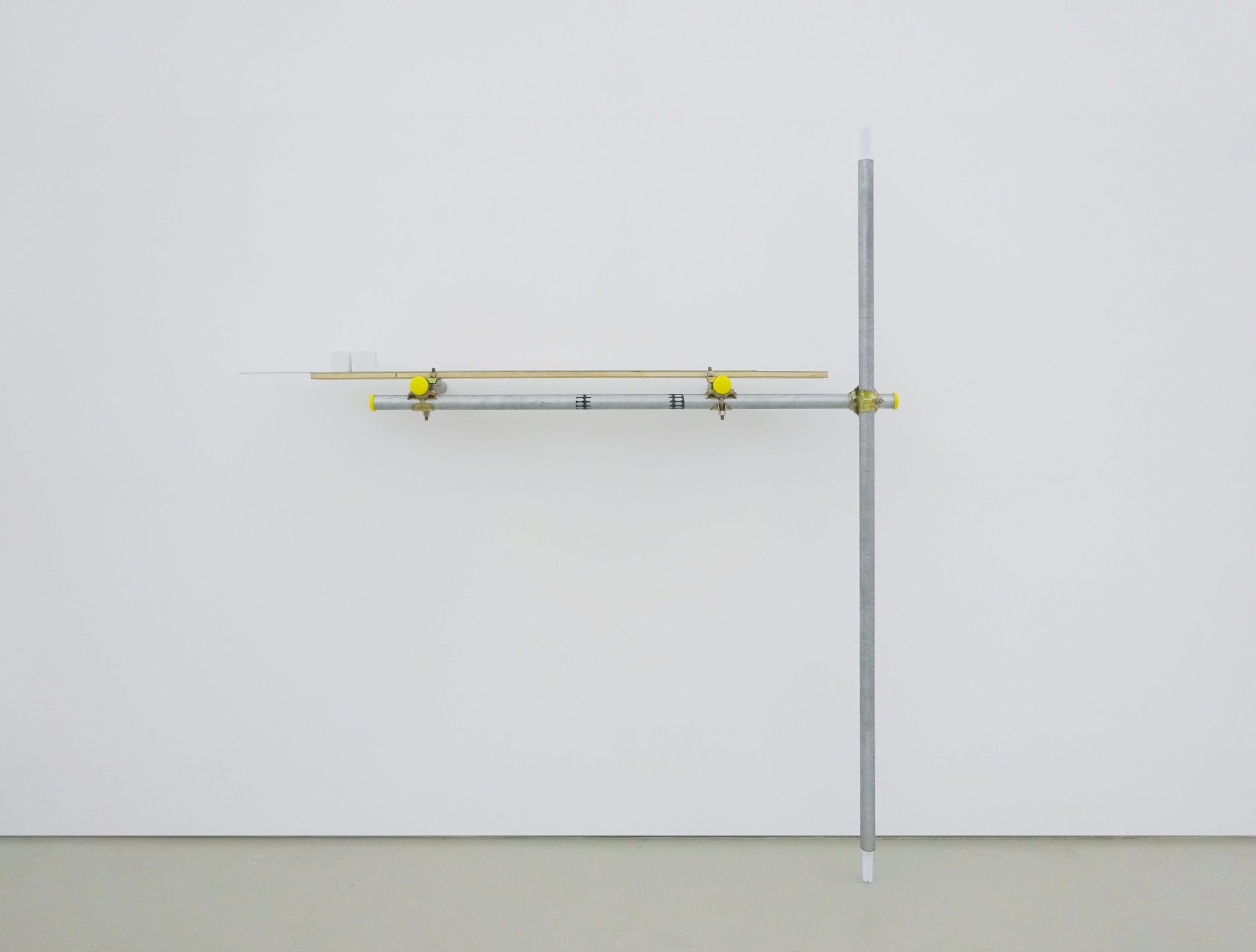
Time, alongside space, seems to be a crucial variable in your work. Many of your pieces exist only for the duration of an exhibition, after which they are dismantled or reconfigured in other contexts. Is this approach a reflection on the temporality of art, or is it more of a practical necessity tied to the nature of installation?
I deeply believe that an artwork exists in the minds of people, that it is an experience before it is a physical object. The object itself is just a pretext, a means to imprint meaning and initiate dialogue. Space and time, in this sense, are not necessarily linked to the material longevity of the work, a fundamental requirement for museums but not always essential for art itself.
I remember Kounellis once told me how, for some of his iron labyrinths, he chose not to transport the structures but instead to purchase the metal on-site, where the work was to be reassembled. It was a practical choice, of course, but also a deeply conceptual one. The artwork was not tied to its original material but to its idea, its ability to take shape anew in different contexts.
Not all works need to remain unchanged over time. Some must necessarily transform, adapt, and be reborn. Others, on the other hand, carry a sense of permanence. It is a reflection on the temporality of art. The fact that a piece can be reinstalled or recreated in a new space, under new conditions, does not weaken it but rather amplifies its strength and communicative intensity. Art is not just an object but a process, an idea that lives through time and space and in the mind of the observer.
What projects do you have for the coming years? We always like to ask artists about their future plans at the end of an interview.
It is difficult to make predictions because, in my journey, things have always happened spontaneously, taking shape along the way. I have never followed a rigid or pre-established plan but have always let the work itself guide me.
More than anything, I hope to continue pursuing my artistic discourse with coherence and dedication, never stopping my exploration. I hope to have the strength and energy to keep digging, to go deeper and deeper, because it is precisely there, at the heart of the research, that the most authentic meaning of my work lies.

fakewhale
Founded in 2021, Fakewhale advocates the digital art market's evolution. Viewing NFT technology as a container for art, and leveraging the expansive scope of digital culture, Fakewhale strives to shape a new ecosystem in which art and technology become the starting point, rather than the final destination.
You may also like
The Art of Confusion: How Markets Transformed Exclusion into Value
For decades, the art world has thrived on a grand misunderstanding: mistaking incomprehensibility fo
Monica Bonvicini at Capitain Petzel: It is Night Outside
There’s a moment, just as you cross the gallery’s threshold, when the darkness implied by the ti
Cemile Sahin, «BB – BORN TO BLOOM», at Kunst Halle Sankt Gallen, St.Gallen
«BB – BORN TO BLOOM» by Cemile Sahin, curated by Giovanni Carmine, at Kunst Halle Sankt Gallen,


